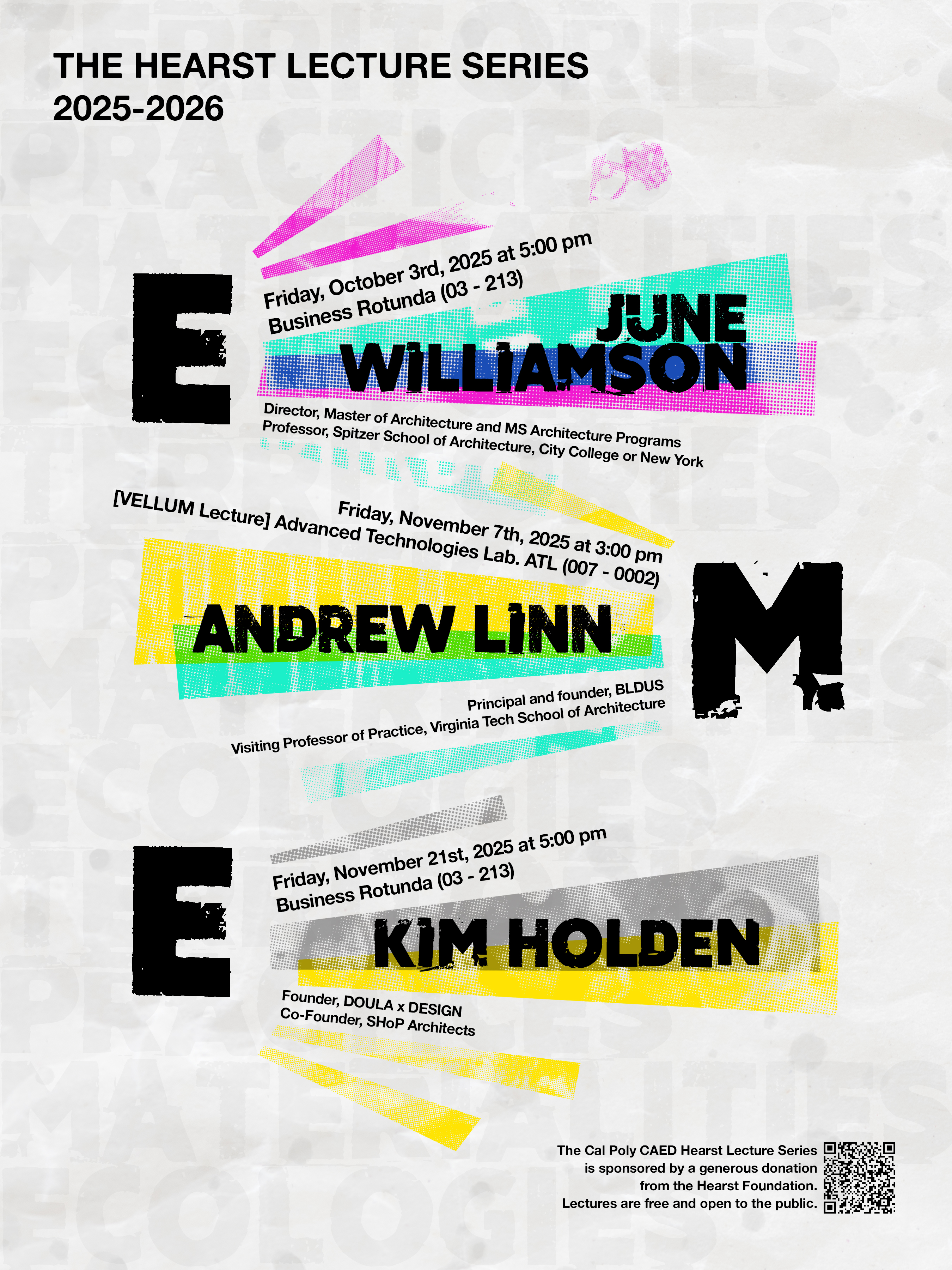
Cal Poly Architecture Student Wins SOM's Robert L. Wesley Award
by Simeon Johnson

"LA Social Housing," "Crane Cove Climate Change Museum," "Platform Holly Research & Visitor Center," and "New Cornelia Mine Memorial" by Kai Benjamin Parel-Sewell.
Architecture student Kai Benjamin Parel-Sewell won the SOM Foundation’s Robert L. Wesley Award for his work over three years at Cal Poly.
The Robert L. Wesley Award is named for SOM’s first Black architect and recognizes and supports BIPOC students at the forefront of architecture and related design fields. Parel-Sewell says he found the application from his research and primarily pursued it independently with a reference from architecture faculty Kelle Brooks.
According to Parel-Sewell, the application process requires extensive submission of standard deliverables like a portfolio and resume and more specialized items like an essay and a video expanding on the applicant’s career goals and personal interests. The application also requires a recommendation letter, which Brooks was happy to provide based on Parel-Sewell’s performance as a student and an instructional student assistant for her second-year class.
“He is internally motivated and sets very high standards for his work. He serves as a student leader in his role in AIAS and as a design studio instructional assistant, organizing workshops for younger students. He deserves to be recognized for his dedication and contribution to our department,” she noted.
With the jury’s decision, Parel-Sewell and the two other winners were awarded a $10,000 grant and access to an exclusive, year-long mentorship program with leaders in the field. Parel-Sewell notes that the award comes at an opportune time since the funding will facilitate his study abroad in South Korea in the spring, and the additional guidance provided through the mentorship program will become especially beneficial as he begins his senior project in the fall.
To students applying for this award or other scholarships, Parel-Sewell recommends reflecting on who you are and your unique personality before trying to translate that shine through every aspect of your application.
“Something I’ve had to come around to is learning to be very focused and honest about what I need and want and planning ahead for my financial needs and career goals,” he explained. “I think being very direct and eloquent about your goals is super important and really gives a clear picture of who you are and how their support is going to help you. What they want to know is, who is this person? How are we helping them? Making sure they see you, and that your goals resonate with their goals is critical.”
Reflecting on his time in the department, Parel-Sewell notes the program’s more technical Learn by Doing approach prepares students to be Ready Day One.
“It can be easy to get frustrated with the curriculum, but once I actually got out there and was able to compare myself to people from other colleges, I felt proud of how much technical knowledge we come out with. Even though people complain about third-year and second-year tech classes, it all applies if you can make the most of those experiences,” he said.
Another strength he notes is the strong emphasis placed on getting students into internships and work opportunities throughout their time in school. In addition to his summer internships, Parel-Sewell has spent the past fall and winter working at Carrier Johnson and Culture in San Diego, where he has had the chance to work on large-scale multifamily residential projects with experienced designers in the field.
Parel-Sewell also highlights the opportunities afforded by study abroad programs within the college, in which he will use some of the funds from the award to participate.
“For me, I see this as an opportunity to reconnect with my Asian heritage, even if it is a different nationality than mine. There are still a lot of shared experiences between countries so the opportunity to go to the continent was an exciting one. Aside from that, architecturally speaking, South Korea is at the forefront of technology and contemporary architecture. They also have a rich portfolio of historic architecture that I’m excited to learn about,” he said.
Reflecting on his time, while optimistic about the program, Parel-Sewell also noted some areas for improvement. While off-campus study has been possible, he explained that significant effort was required to get the necessary approvals. He expressed hopes that the process could be streamlined, and the department could build more flexibility into the program as it moves to the semester system to make these opportunities more accessible to students. He noticed that the need for more diversity among the faculty was another opportunity for growth.
“I’ve seen examples where students struggled to relate to the faculty sometimes due to their different cultural backgrounds. A more diverse faculty would help that situation,” he explained.
Finally, he noted that financial barriers still deter many potential applicants. The cost of five years in the program is significant. With lower entry-level salaries than many professions, applicants from lower-income backgrounds may find a career in architecture unfeasible.
Concluding, Parel-Sewell reaffirmed that he had had a good experience in the architecture program and has found the instruction and the learning environment valuable.
“I am really appreciative of all of the support I’ve gotten from my parents, my friends, faculty, and my peers at Carrier Johnson + CULTURE. It’s just super cool to see all of my hard work and their generous support pay off, and I am really excited to see what lies ahead,” he said.



